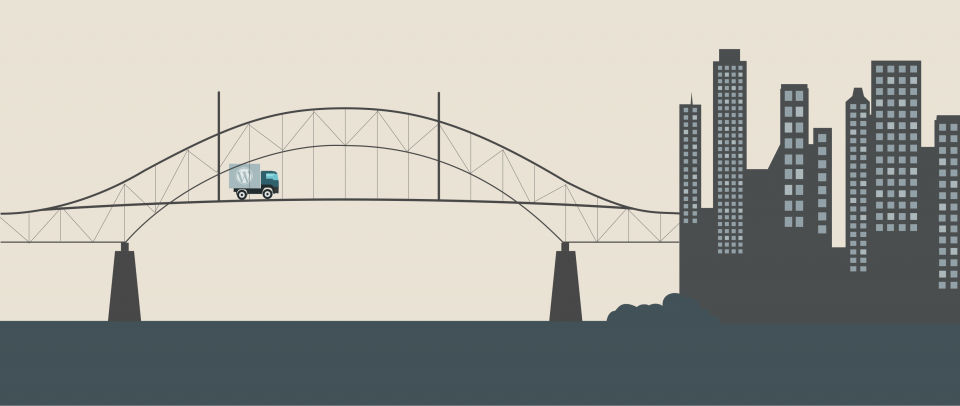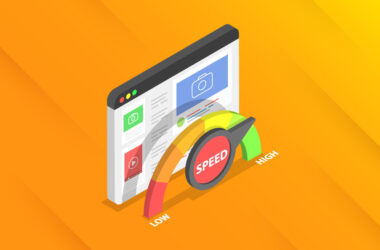WordPress is a Gateway
Want to understand how the web does what it does? WordPress will guide you on your journey.
When a group of open source developers gathered online some 10 years ago to launch a new project they had no idea how fundamentally they and others like them would change the world. The project had a name: “WordPress”, and a goal: To make publishing your thoughts and ideas on the web as easy as possible, and make the solution free and accessible to anyone willing to try it.
You could argue that WordPress is the next link in the chain of the work started by Johannes Gutenberg and furthered by luminaries like Stewart Brand and Tim Berners-Lee: Make information easy to reproduce and accessible to everyone and change the world. The web is the modern printing press and hypertext markup language facilitates content access on an almost unlimited scale through annotation and interlinking. But the production and publication of markup and content on the web was long an endeavor restricted to the anointed few. What WordPress did was lower the barrier to a level where anyone with an internet connection could create and publish content and share it with the world.
A Gateway to Expression
Every one of us has a story worth telling, an idea worth discussing, a creation worth sharing. But while we all have it within ourselves to create something, getting that something out in front of other people has never been an easy job.
Through the ages people cut glyphs into rock and wood, painted on papyrus and canvas, used ink on paper, and printed letters on presses to get the word out and share their insight. While these static forms of information sharing were effective they were also limited in reach due to their physical nature.
In modern times other means of communication became available: The radio, the telephone, the television, and finally the internet. Our reach became greater and information could be shared across vast distances. But broadcasting this information was expensive and limited to those with power, means, and know-how.
WordPress changed all this. Today the process of setting up and configuring a fully functional website from scratch takes less than 30 minutes. And once that site is up and running the owner can not only share her ideas in text, images, audio, and video, but also interact with those that interact with her. A website powered by WordPress is more than just a means of publication: It is a communication tool that allows anyone to reach out over the web and connect with other human beings.
A Gateway to Learning
The web as we experience it on a day to day basis is a carefully crafted mask. Behind the clear type and glossy images hides a menagerie of code never meant for human consumption. The challenge of course is that while the code is not meant for our eyes, we still have to write it to make the web work. Which begs the question: “Where do I begin?”
Traditionally an aspiring web designer or developer would start at the bottom: Learn to write HTML from scratch. Then add some CSS to make it look good, layer some JavaScript on top for interactivity, and finally delve into server-side scripting for database integration. While this is a great methodical approach to learning, it is neither efficient nor for everyone.
When a person comes to web design or development it is usually with a desire to create something. Learning through tinkering, discovery, and trial and error allows the learner to develop connections and understanding on her own terms and at her own pace and relates what she does with what she wants to accomplish.
Whether by design or by chance WordPress has become a tool that not only allows for but encourages this type of learning. When a new user starts out it is usually with the simple intent of creating and publishing content. This activity is handled entirely by the WordPress user interface and the user is abstracted from the code of the web and presented with a human language experience. Then something interesting happens: As the user becomes familiar with the application and its functions she will naturally start migrating toward the code, maybe to figure out why a certain element is not acting as expected or to move a link from the editor to a sidebar widget. This desire, and the discovery of a solution, provides her with a self-initiated starting point for a learning path that more often than not will take her on a journey to becoming a full fledged web developer.
The power of WordPress as a learning platform for the web lies in its total separation between the content and presentation layers and its compartmentalized structure: Out of the box WordPress already works and is up to current web standards. When she is ready to start exploring she can use a plugin like Jetpack to make modifications to the stylesheets of the site without having to worry about breaking anything or losing her content. Her next step will be a child theme where she can approach an existing theme like a box of LEGOs, pick it apart, change it’s appearance and functionality, and put it together again in any way she wants. And the process of building a child theme provides a natural progression into building a full theme from scratch. Ask around and you will find many web developers whose journeys of learning started by creating a WordPress site.
A Gateway to Collaboration
The power and popularity of WordPress can be traced back to two simple words: Open Source. Unbound by profit margins, sales goals, and greedy investors open source software is allowed to grow and evolve naturally and answer the needs of its users. This is facilitated by the recursive nature of the system: A user comes to the application because of work contributed by other users and ends up contributing her own code to the application which in turn brings in new users. It is a dynamic and sometimes volatile process of constant flux, growth, and regeneration that produces solutions closed source applications can only dream of.
For WordPress this has become a winning formula: People come to WordPress because its intuitive build makes expression easy, they learn design and development through a natural and self-induced progression, and they contribute back to the application based on their own experience and what they have learned. This creates a positive feedback loop where the community that uses WordPress helps drive it forward and keeps it at the cutting edge of the modern web.
WordPress is Your Gateway
The world we live in today has awarded us an almost endless array of choices. We no longer need to be content with what we are presented with. We can choose to take the easy road or go down paths left untouched for decades and that is OK. The promise that “it just works” has become so ingrained that we rarely ask the question “but how?” This is where WordPress takes a stand, and where we stand with it. Want to publish your ideas and change the world? WordPress is there for you. Want to understand how the web does what it does? WordPress will guide you on your journey. Want to build something new and share it with the world? Join the thousands of designers and developers who make what WordPress is and what WordPress will be.
This is not a carefully scripted marketing message meant to entice you into purchasing a product or buy into a new way of life. This is a rallying cry to every person with a story to tell, a curious mind, or a need to build something with others: WordPress is your gateway to whatever you want it to be. Step on through.





